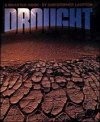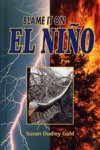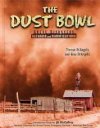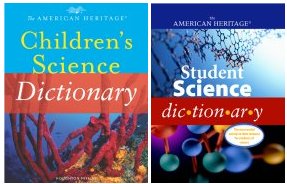A Dire Shortage of Water Additional Information
Share this:
- Share via email (Opens in new window) Email
- Click to share on Facebook (Opens in new window) Facebook
- Click to share on X (Opens in new window) X
- Click to share on Pinterest (Opens in new window) Pinterest
- Click to share on Reddit (Opens in new window) Reddit
- Share to Google Classroom (Opens in new window) Google Classroom
- Click to print (Opens in new window) Print
Additional information about drought in the Colorado River Basin is available at water.usgs.gov/pubs/fs/2004/3062/(U.S. Geological Survey).
Information about the Anasazi can be found at www.thefurtrapper.com/anasazi.htm(O.N. Eddins).
You can learn about El Niño and see a map of current ocean temperatures at www.elnino.noaa.gov/ (National Oceanic and Atmospheric Administration).
An environmental history of the Colorado Plateau is available at www.cpluhna.nau.edu/(Northern Arizona University).
Teachers and Parents:
Lesson plans on the topic of water usage can be found at www.k12science.org/curriculum/drainproj/index.html (Stevens Institute of Technology, Center for Improved Engineering and Science Education).
Water Science for Schools wwwga.usgs.gov/edu/index.html U.S. Geological Survey
Books recommended by SearchIt!Science:
 |
Drought — Christopher Lampton
Published by Millbrook Press, 1992.
When the rains stop coming, no one notices at first. When the plants die and dust storms blow, everyone knows about the drought. Droughts throughout history are discussed in this book, along with the factors that bring rain or keep it away. An explanation of the hydrologic cycle is accompanied by helpful diagrams. This book includes a section on predicting droughts. |
 |
Blame It On El Niño — Susan Dudley Gold
Published by Raintree Steck-Vaughn, 1999.
El Niño takes a lot of blame. The “powerful ocean event” has been credited with strange weather around the globe. It turned a Peruvian desert into a large lake and helped cause an outbreak of bubonic plague in New Mexico. Why, and how, does it cause such bizarre weather? This book explains how El Niño works and what changes it has caused around the globe. A chapter explains how scientists track El Niño, and another chapter focuses on the El Niño event of 1997–1998. The final chapter forecasts the effects El Niño will have in the future. |
 |
The Dust Bowl — Therese DeAngelis, Gina DeAngelis
Published by Chelsea House, 2002.
If you lived in the Midwest during the 1930s, you might have gotten used to sleeping with a cloth over your nose and mouth, putting petroleum jelly in your nostrils, shoveling out your front door, and getting sick from eating so much dust. Combined with the drought and the Great Depression, the “black blizzards” of the 1930s were so bad that they caused thousands of people to move to California and other more hospitable places. But why did the great grain-growing area of America turn into the windswept, barren Dust Bowl? And could it happen again? With black-and-white photos and firsthand accounts of the Dust Bowl years, this book examines what life for Midwest farmers was like during this period. Find out how poor farming practices combined with a drought resulted in death and poverty for thousands of people, learn about the Okie migration, and discover how the federal government attempted to deal with this disaster. |
Power Words
La Niña A period during which the surface water of the eastern Pacific Ocean becomes cooler than usual. The cooler water brings drought to South America and heavy rains to
Australia and Indonesia.
Copyright © 2002, 2003 Houghton-Mifflin Company. All rights reserved. Used with permission.
